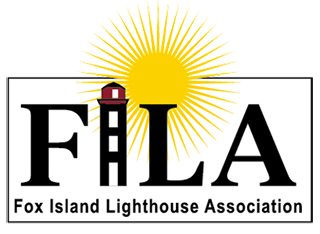Two work trips were completed at the lightstation during the month of June—the third annual “women’s trip” (starring Linda P., Cathy A., Kathy S., Sandra W., and a newcomer to the island, Jen B.), and the painter’s trip with Kathy S., Audrey O., and contractor Mark Lee. (I can’t help myself about the bunny ears–this was up at Faro in Northport before we started the trip, when we were all still well rested and ready!)

Much brush was cleared during the women’s trip; the secondary firepit was placed near the summer kitchen; sidewalks were edged and moss scraped; lawns were mowed; weeds were whacked; poison ivy was sprayed; the Summer Kitchen saw a deep cleaning (ask Kathy S. about her ‘mouse hunter’ stories), and much work was done to improve the landing site for the Bear (Manitou transit’s landing craft). Jen B. braved the chilly Lake Michigan waters while Cathy A. and Linda P. filled many buckets of rocks—back breaking work indeed! Meanwhile, intrepid volunteer Sandra W. became the queen of the brush-hog—clearing much of the area behind the lighthouse. Sandy, Jen, and Kathy cleared the gravesite as well.

Of course, standard cooking, cleaning, sweeping, and mouse mania consumed much of our time as well, although Sandy and Jen had some time to explore the West Beach (ah, the energy of youth!) (That’s Jen in the approximately 56 degree water!)
Even Georgie girl was exhausted at the end of the trip!
The painting team stayed quit e busy as well on the second trip in June, with major painting projects being scraping and applying lead-remediating paint to the hallway of the 1867 building, touching up the parlor, and scraping and painting the oil house.
e busy as well on the second trip in June, with major painting projects being scraping and applying lead-remediating paint to the hallway of the 1867 building, touching up the parlor, and scraping and painting the oil house.

Mark Lee replaced the dangerous sidewalk sections leading to the summer kitchen, installed the mold moss guards, and cleaned the forest growing out of the gutters of the Assistant Keepers quarters.
Nor did they neglect the landscaping, mowing, weed whacking, operating the water system and pump, and spraying for poison ivy.


During their free time, they even invented a form of “extreme croquet” to be played on the island!






















 e busy as well on the second trip in June, with major painting projects being scraping and applying lead-remediating paint to the hallway of the 1867 building, touching up the parlor, and scraping and painting the oil house.
e busy as well on the second trip in June, with major painting projects being scraping and applying lead-remediating paint to the hallway of the 1867 building, touching up the parlor, and scraping and painting the oil house.












